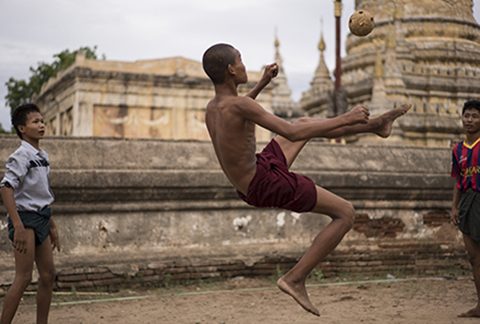Until recently, Myanmar was all but off-limits to Australians due to sanctions and travel bans. But a new constitution in 2008 and non-democratic elections in 2010 have triggered major political and economic transformation, and helped open up the former pariah of Southeast Asia.
In June, I was part of one of the first groups of Australian students to travel to Myanmar, taking part in a two-week ANU study tour. I came to learn more about the country’s economic and political transition, wanting to understand how a newly awakening democracy begins to unpick decades of military rule.
In this photo essay, I have captured some of the images that stood out to me during my time in Myanmar as quintessential examples of the country’s remarkable change, as well as some of its enduring continuity.
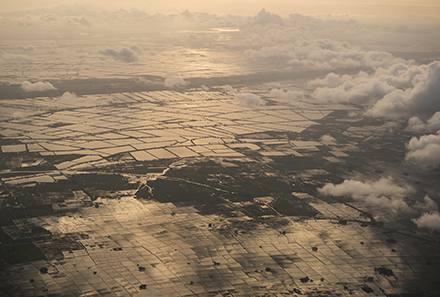
Agriculture in Myanmar accounts for 35 per cent of GDP and 65 per cent of the labour force. Viewing the landscape from the air shows agriculture’s importance. The landscape is a lattice of plots, interspersed with rich green swathes. Water channels are full to overflowing, a result of the constant monsoonal rain at this time of the year. Unsurprisingly, rice is the primary crop.
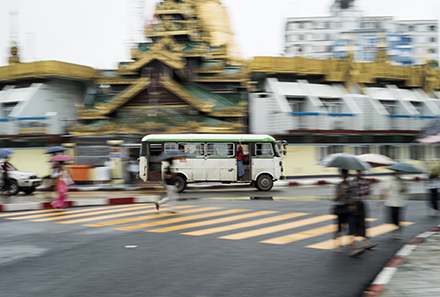
Sule Pagoda squats on Yangon’s main drag, the aptly-named Sule Pagoda Road. The pagoda forms a roundabout which traffic and pedestrians mill around throughout the day. Inside, the pagoda shelters devotees from the frenetic pace of the street and hustle and bustle outside.
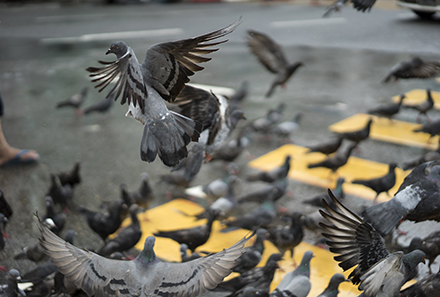
On the steps to Sule Pagoda, street sellers package up bundles of corn kernels. These are sold for a few hundred kyat (roughly 20 Australian cents). Flocks of pigeons sit on the roadside, waiting for someone to throw a handful of corn. Step toward the pigeons and they erupt into a thrashing mass of beaks and feathers, only to settle moments later, awaiting the next offering.
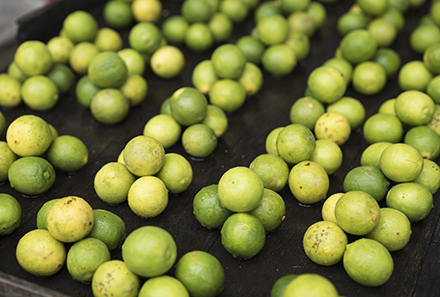
Pansodan Street Jetty is the departure point for ferries that crisscross the Yangon River. The double-decker ferries carry passengers between the Yangon CBD and the village of Dala. The ferry is full of vendors selling bread, snacks and fruit. These limes were on sale in the marketplace outside the Jetty.
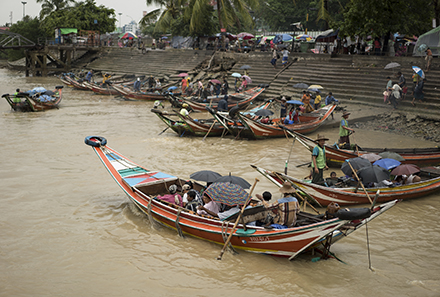
Late on a Saturday afternoon, this bank of the Yangon River is a hive of activity. Commuters stream off buses onto the river banks where they board ferries. As soon as they have a full load, the ferries roar away from the shore, leaving space for the next one to dock.
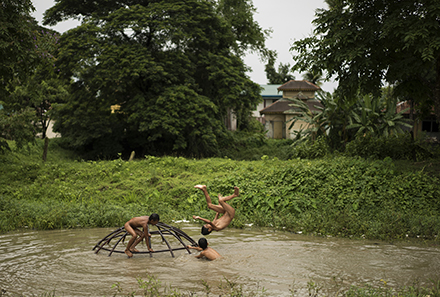
A short boat trip across the river takes you to Dala, a village which seems a world away from Yangon’s frenetic CBD. The quiet streets are lined with homes, schools and pagodas. Despite surviving a series of natural disasters, small industries appear to be flourishing. These young children seemed unfazed by the monsoonal downpours.
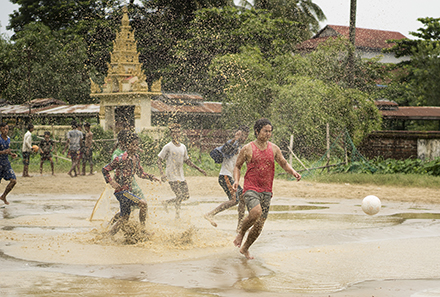
During monsoonal showers in Myanmar, rain accumulates at an incredible rate. Skies turn into waterfalls, roads turn into rivers, and sports fields turn into lakes. Even so, a washed-out field is no impediment to a good game of soccer. These players maneuvred the ball over and around the deepest puddles with ease.
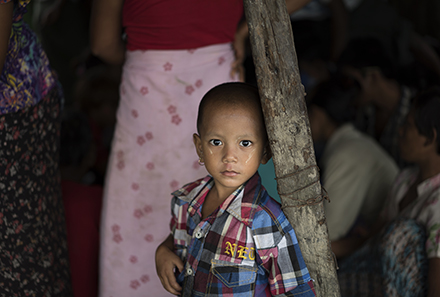
Since Dala was ravaged by Cyclone Nargis in 2008, the community has worked hard to rebuild. Walking through the villages, it is hard to imagine how some of the houses would withstand the force of a cyclone. Many clearly haven’t, as they lean precariously or lie in pieces. The area is still being reconstructed seven years after the natural disaster. In his limited English, our rickshaw driver pointed out the makeshift houses where young families were living.
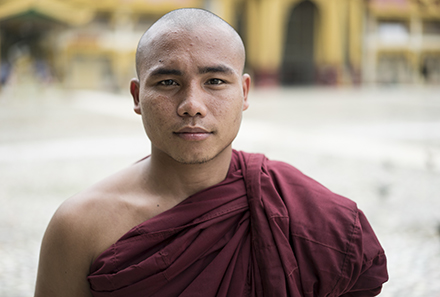
Botataung Pagoda is nestled between the port and a busy marketplace in downtown Yangon. The pagoda is rumoured to hold a sacred hair from Buddha. With its hollowed out interior, visitors can wander the building’s maze-like corridors.
Passing this monk in the pagoda’s grounds, I asked if I could take his portrait. He smiled and stood patiently. As I thanked him, he pulled out his smartphone and motioned to reciprocate. At that moment it struck me that Myanmar’s rapid modernisation is taking place in the midst of its rich traditions and culture.
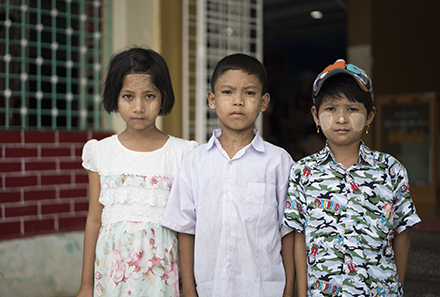
Walking the streets of Yangon, I noticed people wearing a white cream on their faces. Thanakha is a product that many believe protects the skin from sunlight. The paste also absorbs sweat from the skin. The product is derived from the thanakha plant, which is ground into a smooth paste. People wear thanakha in varying styles. Some simply smear the paste over their cheeks, while others create shapes or geometric patterns.
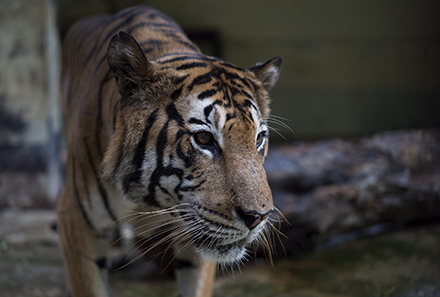
A visit to the Yangon Zoological Gardens reveals the appalling state of animal welfare in Myanmar, and the dire conditions that many animals endure in captivity in developing countries. There is an obvious lack of infrastructure needed to ensure the continuation of endangered species, such as the Bengal tiger pictured here.
While visitors stroll through manicured gardens of lush plants, the zoo’s animals are confined to small cages. The enclosures themselves are made of concrete and steel. I passed one cage with a young-looking tiger that seemed particularly distressed. As he paced backwards and forwards he howled incessantly. It was harrowing.
There is an argument that animals like these tigers are better off in captivity, as illegal trade in Myanmar’s borderlands puts them at greater risk in the wild. But clearly, zoo conditions must improve. One can only hope that Myanmar’s political and economic development will bring more attention to the welfare of these rare and endangered creatures.
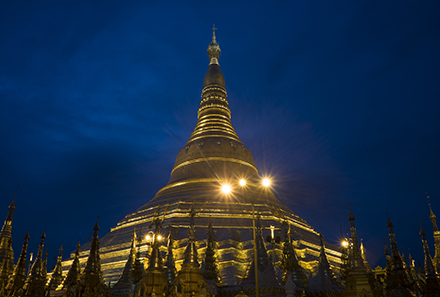
Visit Yangon and it’s hard to miss Shwedagon Pagoda. Sitting atop a hill overlooking the city, the gold-plated stupa stands proudly over the city.
I visited the pagoda in the early evening. It was alive with the gentle rhythm of devotees and tourists milling around the site. A glance around Shwedagon gives clear indications of Myanmar’s swelling tourism industry. English-speaking guides were proudly showing visitors around the site, telling the rich history of Shwedagon.
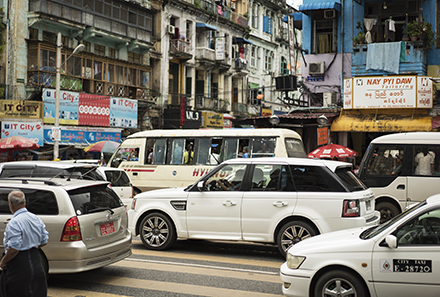
The growing economy has placed an increasing burden on Yangon’s traffic infrastructure. The city centre regularly grinds to a halt as overcrowded buses wheeze and taxis honk. Amidst the traffic, the inequality gap is glaringly obvious. Commuters lean out bus windows while rickshaw drivers jostle to fit through narrow gaps in the traffic. Meanwhile, others sit in the air-conditioned comfort of luxury four-wheel-drives and limousines. It’s apparent that Myanmar’s economic growth only trickles down to a select few.
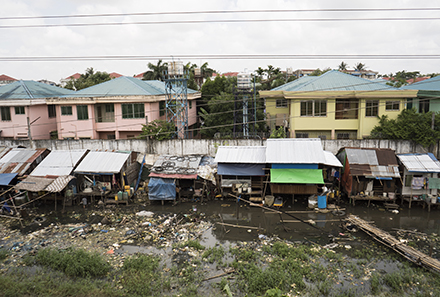
Aboard the Circle Line train you gain an insight into the living conditions for many people in Yangon. Threading through the suburbs, the train line passes countless homes which are propped up in swamplands. Vast masses of litter float in the water among the homes. It’s in this water that children wash.
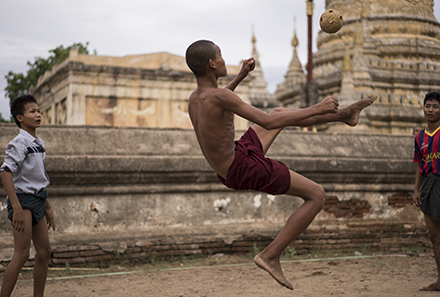
Chinlone is a sport that involves a cane ball. Players use their feet, knees and head to pass the ball back and forth. The objective is to keep the ball from touching the ground. Chinlone games are often a feature of Buddhist festivals in Myanmar. I photographed this game outside a pagoda in the old city of Bagan.
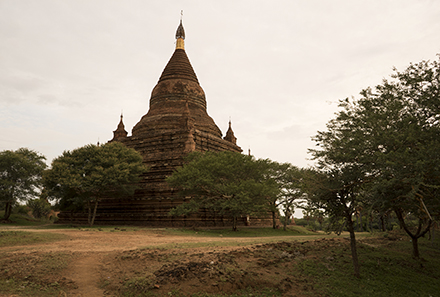
The old city of Bagan was originally constructed between the ninth and 13th centuries, when the city was the capital of the Kingdom of Pagan. Bagan is remarkable for its many pagodas and temples. Though many have crumbled to the ground, over 2,200 of the constructions remain. The city fell to Mongol invaders in the 13th century.
One can imagine that tourists will flock to Bagan in coming years, and likely become an attraction to rival Cambodia’s Angkor Wat and Indonesia’s Borobudur temples.
James Walsh is an Asian studies (with honours) graduate from the Australian National University, and a freelance photographer. As part of his ANU master’s degree he was one of the participants in the field school, ‘The Political Economy of Myanmar‘, led by New Mandala co-founder Andrew Walker.
 Facebook
Facebook  Twitter
Twitter  Soundcloud
Soundcloud  Youtube
Youtube  Rss
Rss 